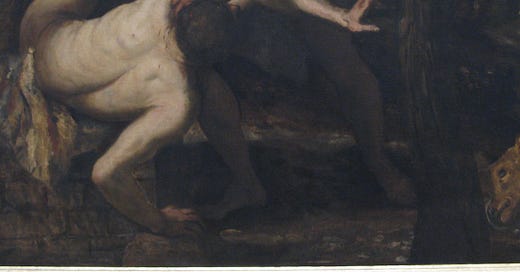Jewish folklore has never had the same degree of exposure as the legends of Greece and Rome, or even the mythologies of China and Scandinavia. Perhaps this is because of the way in which Jewish legends were told. In most cultures, stories were passed on by word of mouth, by storytellers addressing audiences, travellers swapping tales, parents telling stories to their children. This all happened in the Jewish world too, but it wasn’t the main way in which folklore was disseminated. Rather, story-telling became part of the religious teachers’ tool kit; they used folklore as a means of getting their message across.
It is easy to understand why this happened. The Jewish religion is founded on the Bible, and the Bible’s great innovation was to use stories as a way of conveying ethical ideas. Many of them, like Noah’s Ark, the crossing of the Red Sea or Balaam’s talking donkey, still resonate today. Whether one believes them or not, as stories they are fascinating because they are so simple and imaginative. From around 200 BCE onwards, religious teachers built upon these stories, weaving their own ideas onto the narratives of the Bible.
In the Bible’s story of Cain and Abel, for example, Cain was clearly upset that his brother’s offering to God had been accepted, whereas his had not. Before he killed his brother, Cain said something to him but the Bible makes no mention of what he said. This was a perfect opportunity for a story-teller to jump in and tell his audience what Cain may have said.




